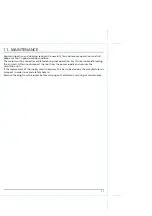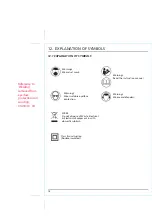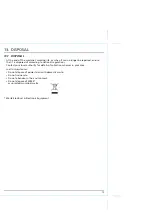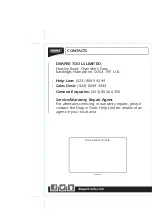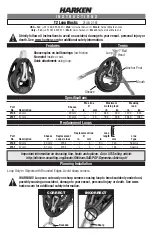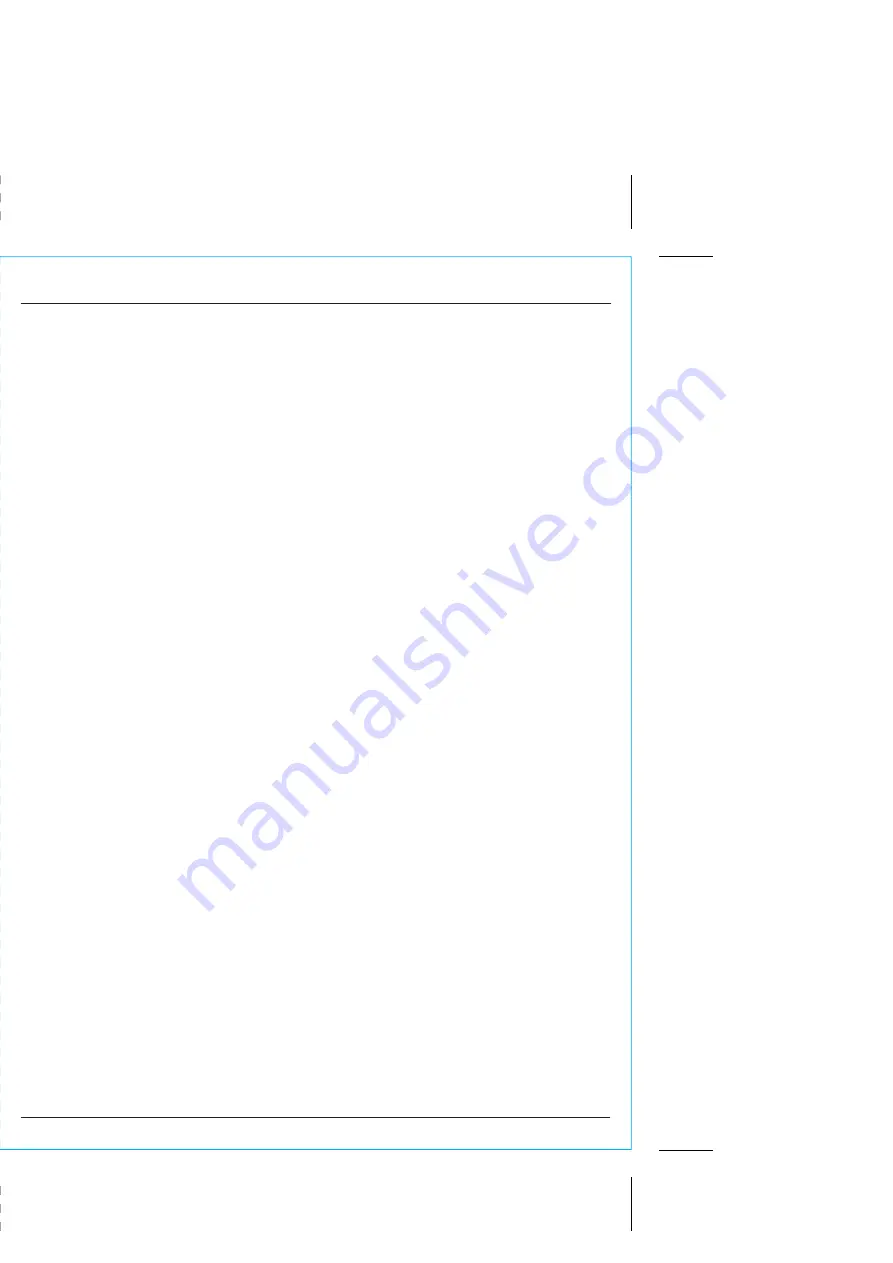
7
5. HEALTH & SAFETY INFORMATION
f) Dress properly. Do not wear loose clothing or jewellery. Keep your hair, clothing and
gloves away from moving parts.
Loose clothes, jewellery or long hair can be caught in
moving parts.
g) If devices are provided for the connection of dust extraction and collection facilities,
ensure these are connected and properly used.
Use of these devices can reduce
dust-related hazards.
4) Power tool use and care
a) Do not force the power tool. Use the correct power tool for your application.
The
correct power tool will do the job better and safer at the rate for which it was
designed.
b) Do not use the power tool if the switch does not turn it on and off.
Any power tool
that cannot be controlled with the switch is dangerous and must be repaired.
c) Disconnect the plug from the power source and/or battery pack from the power tool
before making any adjustments, changing accessories, or storing power tools.
Such
preventive safety measures reduce the risk of starting the power tool accidentally.
d) Store idle power tools out of the reach of children and do not allow persons
unfamiliar with the power tool or these instructions to operate the power tool.
Power tools are dangerous in the hands of untrained users.
e) Maintain power tools. Check for misalignment or binding of moving parts, breakage
of parts and any other condition that may affect the power tool’s operation. If
damaged, have the power tool repaired before use.
Many accidents are caused by
poorly maintained power tools.
f) Keep cutting tools sharp and clean.
Properly maintained cutting tools with sharp
cutting edges are less likely to bind and are easier to control.
g) Use the power tool, accessories and tool bits etc. in accordance with these
instructions, taking into account the working conditions and the work to be
performed.
Use of the power tool for operations different from those intended could
result in a hazardous situation.
5) Service
a) Have your power tool serviced by a qualified repair person using only identical
replacement parts.
This will ensure that the safety of the power tool is maintained.
5.2 SPECIFIC SAFETY INSTRUCTIONS FOR ROUTER USE.
1. Hold power tool by insulated gripping surfaces, when performing an operation where
the cutting accessory may contact hidden wiring or its own cord. Cutting accessory
contacting a "live" wire may make exposed metal parts of the power tool "live" and
could give the operator an electric shock.
2. Always wear a dust mask and ear protection when using this power tool.
3. Use only bits, which are designed for this router.
4. Use only sharp bits that are not chipped or cracked. Blunt bits will cause stalling.
5. Secure small pieces of wood firmly before working. Never hold them in your hand.
6. Danger. Keep hands away from the cutting area.
7. Secure the workpiece by means of the clamping equipment.
8. Before staring up, check that the bit is firmly positioned and secured into the collets.
9. The maximum indicated limit rotation speed of the milling bit must not be exceeded.
10. Routing must always be carried out against the direction of rotation (bit-rotation) of the
bit.
11. The bit must be running at full speed before lowering into the workpiece.

















